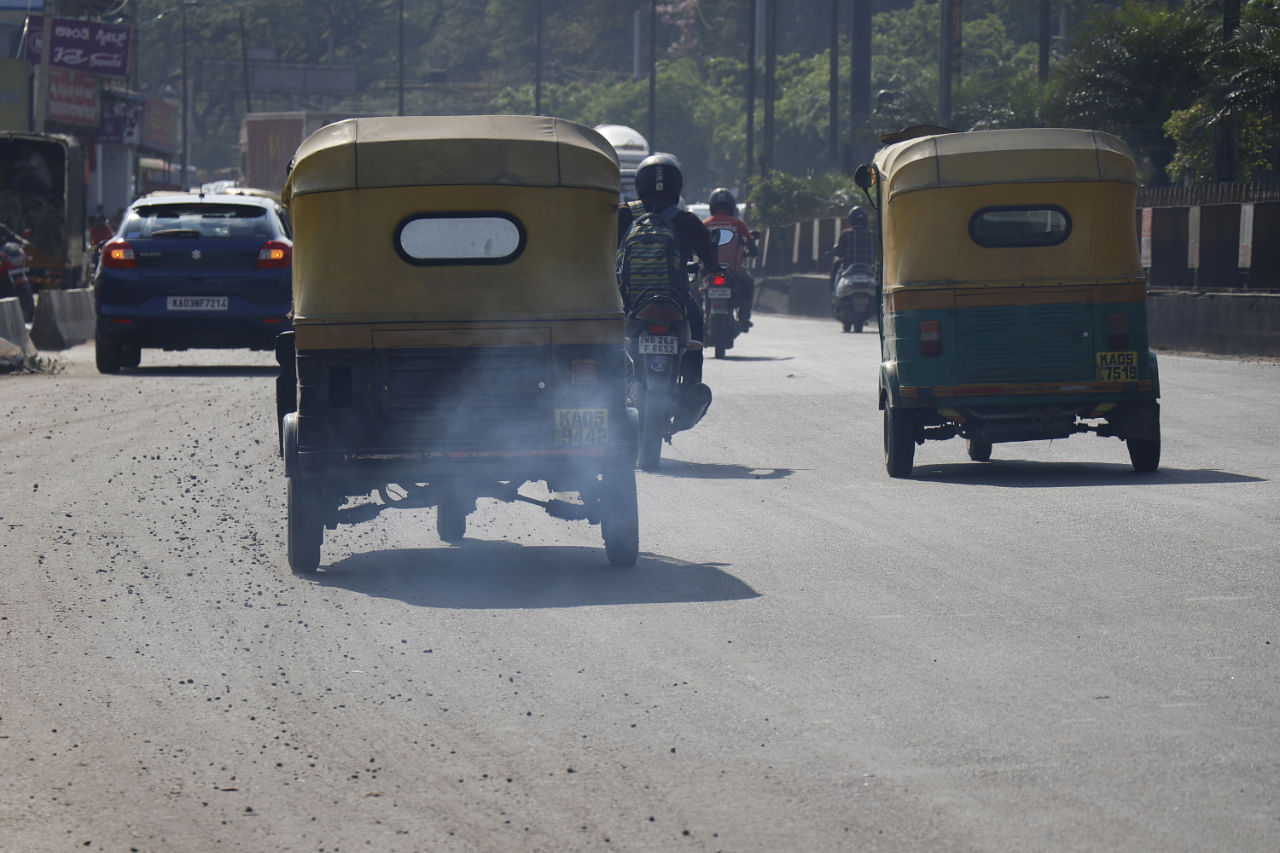

By Kapil Kajal
While transport helps in the development of a region, the increase in economic activities and the resultant dependence on fossil fuels increase the level of air pollution. The Silicon Valley of India is no stranger to such a trend and almost half of Bengaluru’s carbon dioxide emissions come from vehicles.
With over 83 lakh registered vehicles in Bengaluru, vehicular emission is responsible for 43% of the carbon dioxide equivalent emissions, according to a paper by the Centre of Ecological Science (CES). The study added that Bengaluru is second in terms of the percentage of carbon dioxide emitted by vehicles after Hyderabad.
Dr TV Ramachandra, from the CES, IISc, author of the research, informed that the emissions from the vehicles in Bengaluru is the major contributor to increasing the air pollution in the city and increase in the emissions of carbon dioxide.
Lack of appropriate public transport system here and haphazard growth owing to unplanned urbanisation have led to large scale usage of private vehicles, Dr Ramachandra commented.
A study by the Karnataka State Pollution Control Board (KSPCB) found out that vehicular emissions and traffic jams by them together contributed to 62% of the fine dust out of which vehicles emissions contribute nearly 30%.
Dr H Lokeshwari, Chief Scientific Officer with the KSPCB, stated that the KSPCB in its 44-action point plan to reduce air pollution has issued instructions to the Bangalore Metropolitan Transport Corporation to switch to CNG buses and told Namma Metro to complete the work of the remaining phases fast so that people can take the metro instead of personal vehicles.
According to a World Health Organization report, the health effects from the vehicular emissions include heart disease, stroke, chronic obstructive pulmonary disease, lung cancer, and acute respiratory infections in children and adults as well.
Dr Yellapa Reddy, the Governing Council Member of the Foundation for Ecological Security of India, suggested that the companies be shifted to other areas of the state to reduce the load on the city.
Apart from carbon dioxide, it is also estimated that the vehicles account for nearly all of the carbon monoxide, more than 80% of nitrogen oxides, 40% of volatile organic compounds, 20% of sulphur dioxide and 35% of particulate matter in the city according to a 2012 study on air pollution by automobiles in Bengaluru city.
The city transport systems have to provide faster and cheaper movement of passengers than the urban automobile such as elevated rail system, bus route priority system, metro rail, monorail, commuter rail and sky bus for the public transport modes, the study suggested.
There is also a need for traffic regulation, efficient public transportation system in the city and heavy penalties and seizure of vehicles during the violation of rules should be imposed on the public and for the protection of environment more emphasis should be laid on compulsory environmental education at school level for the awareness to people know about how and why we need to save the environment, the study added.
(Author is Bengaluru - based freelance writer and a member of 101Reporters.com, a pan-India network of grassroots reporters.)